Art History Unit 3
1/34
Earn XP
Description and Tags
Name | Mastery | Learn | Test | Matching | Spaced |
|---|
No study sessions yet.
35 Terms
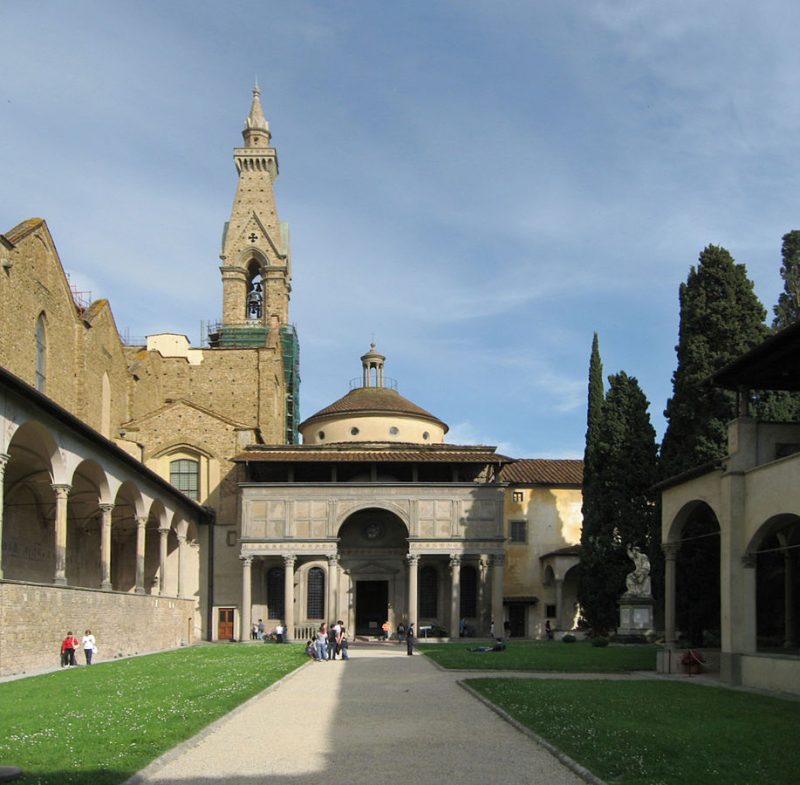
67
Pazzi Chapel; Basillica di Santa Croce, Florence, Italy
Architect: Fillippo Brunelleschi c. 1429-1461, masonry
Funded by Pazzi family, second richest family in Florence. They added a secret room for burials in the back
Early Renaissance; rotunda, simple shapes
Size: working with the small space provided to accomodate for the chapel and teachings by munks. VERY simple floorplan
Tondi: small, circular paintings common in Rome, hence the renaissance — reviving Rome
Decorative columns, some structural but for aesthetics — Pilasters: part of the wall strictly for decoration.
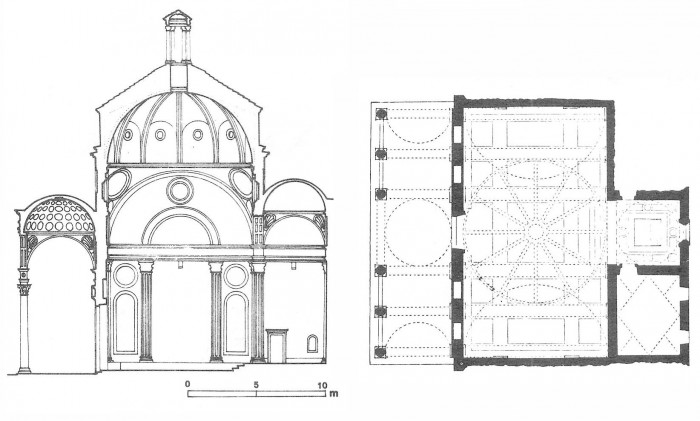
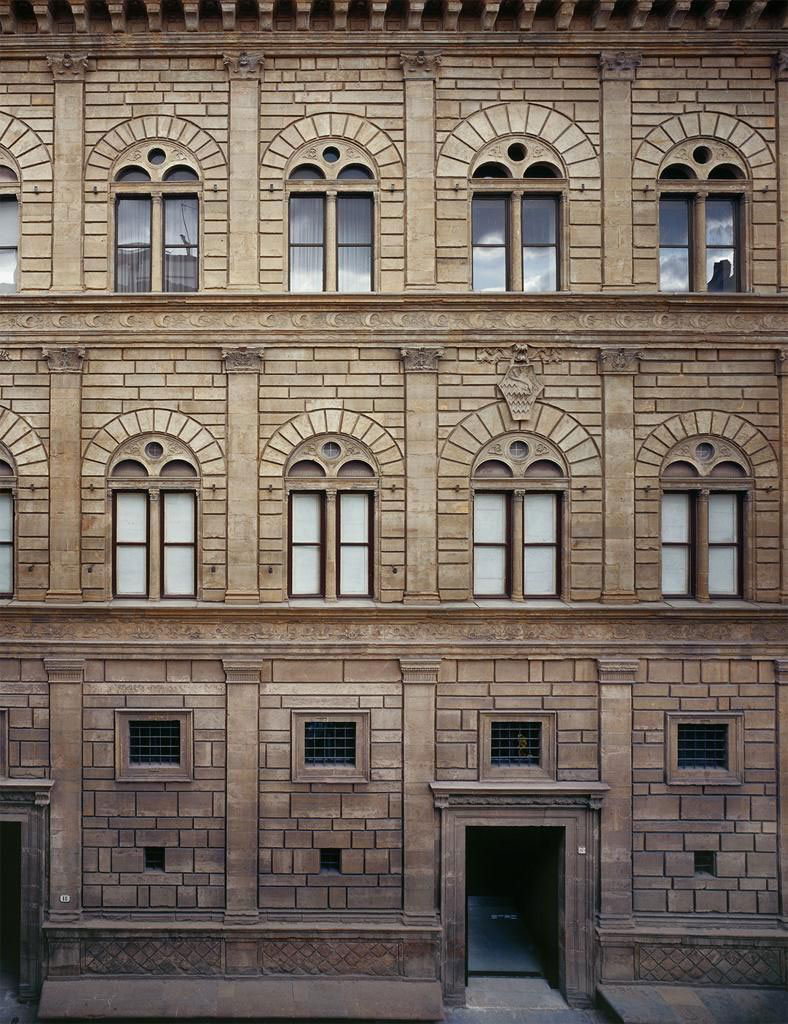
68
Palazzo Rucellai; Florence, Italy
Architect: Leon Battista Alberti c. 1450, stone masonry
Commissioned by the Rucellai family as a home, business, and servant quarters.
Facade becomes critical for move from Medieval Time
Three tiers divided by entablatures, separated by windows
Doric — Ionic — Corinthian
1st floor: business, 2nd floor: guests, 3rd: home for family, 4th: hidden, for servants
Loggia across the street
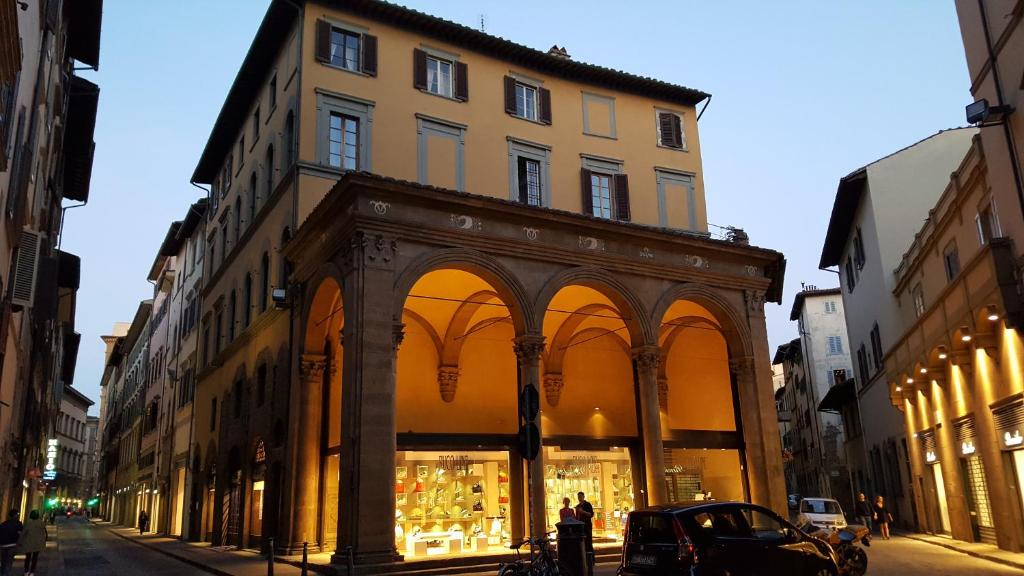
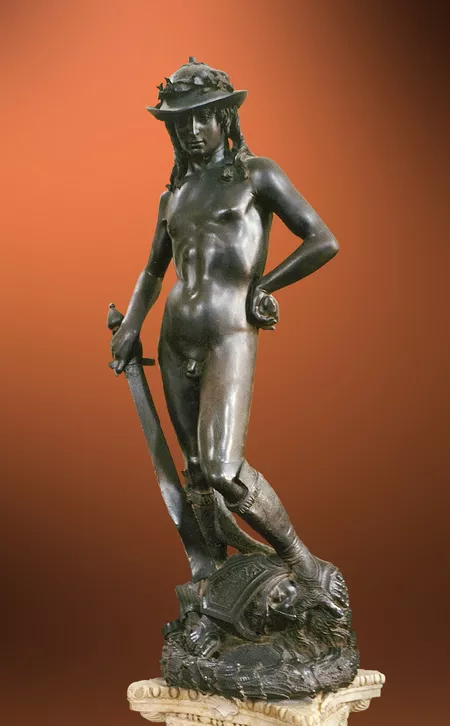
69
David; 15th c. Florence
Donatello c. 1440-1460, Bronze
Earliest freestanding nude sculpture since antiquity — nudity shows he only needs the strength from God, typical of Greco-Roman — he is a hero
Medici commissioned — bronze is costly
Holds a stone in his left hand, a sword in his right
David is young compared to Goliath
androgynous features to show biblical beauty, Donatello’s sexuality plays a part
Attempted to show Medici Family as non-tyrannical (not true, they killed lots of people)
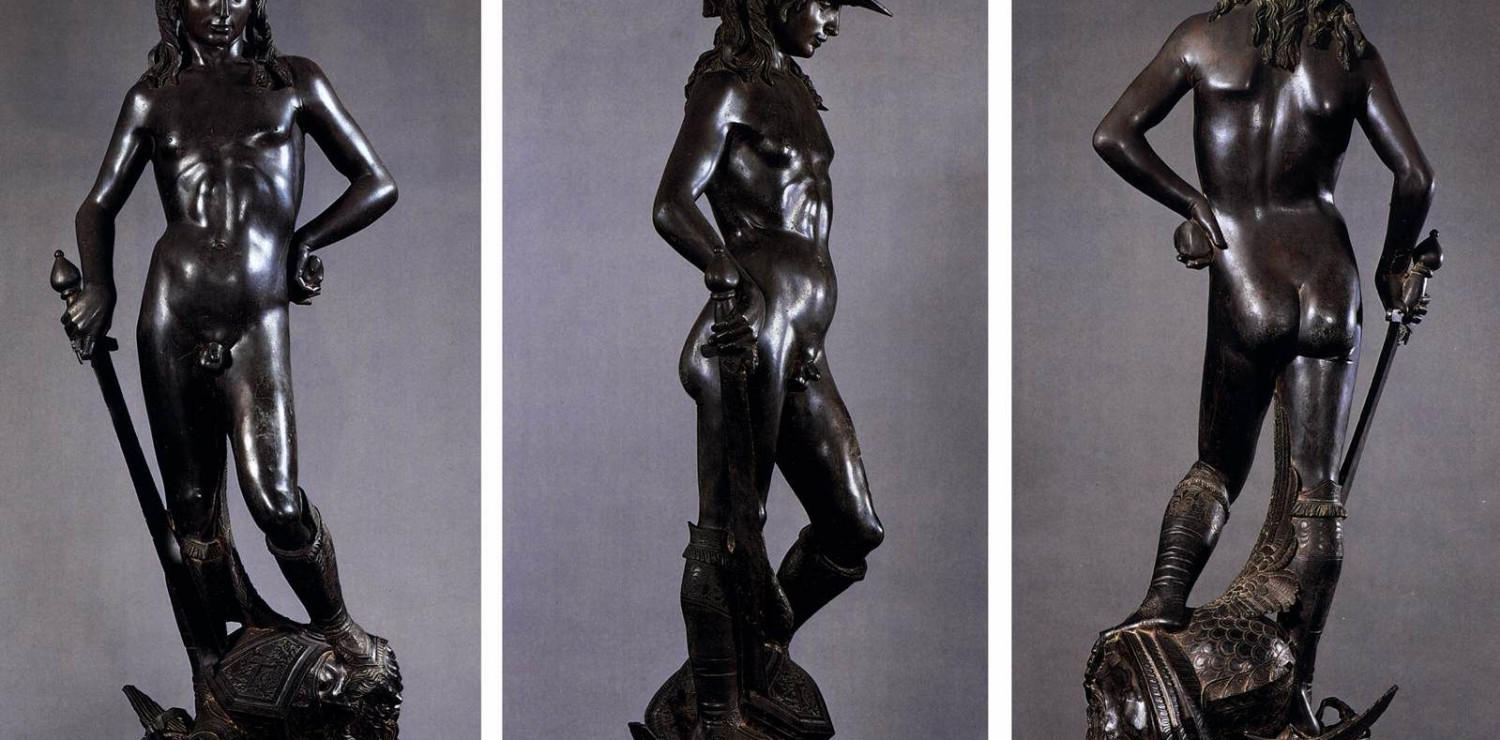

71
Madonna and Child with Two Angels; Florence
Fra Filippo Lippi c. 1465, tempera on wood
New way to view the Virgin Mary and Christ— Naturalism, Christ is a baby, background is very detailed. Halo stays, but thinner
Hands are clasped in prayer, very proportional
Humanism: Mary is mundane, almost human. She isn’t on a throne or above the other people — angels are also human-like, very playful
Mary is pushing the frame, breaking the concept of traditional paintings
Thin veil, traditional of the Renaissance, not what Mary would wear
Competition between city states and artists
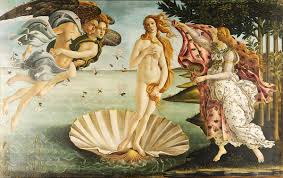
71
Birth of Venus;
Sandro Botticelli c. 1484-1486, tempera on canvas — true painter isn’t known, could be someone from his guild
Goddess Venus arriving from the Sea to the shore — Father is Neptune
Zephyrus and Aura — wind and Spring — flow her to shore, interpretations of deities vary
Spring represents fertility, cloths her
Title was given in the 1800s, very little is known about the painting
Elongated body, scoliosis — doesn’t follow naturalism or humanism, Venus has gothic features
Hyper Detailed patterns, lots of gold
Neoplatonism: Connected to Contrapposto and mythology — all goodness stems from God. Rare to combined myth with Christianity
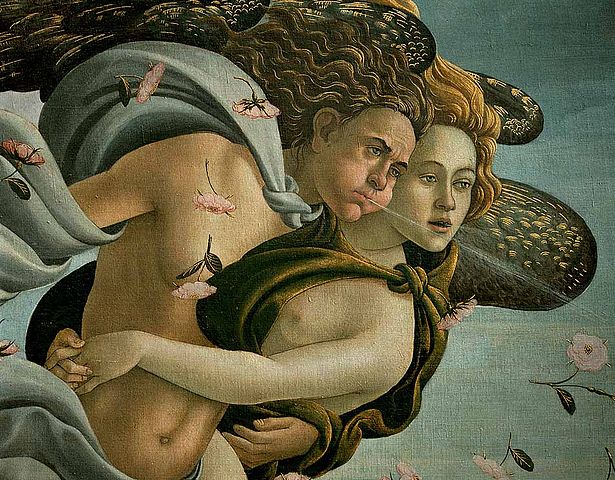
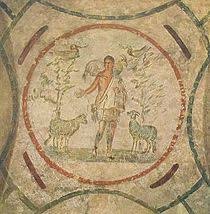
48
Catacomb of Priscilla; Late antique Europe
Rome, Italy 200-400 CE, Excavated tufu & fresco
Catacomb: underground structure
Earliest Christians and Jews are burried here — Land donated by wealthy Roman woman for her family’s burial — now 40,000 tombs in it
Open now due to grave robbing and relic hunting (some martyrs here)
Wealthy had marble, poor had terracotta
Anchors represent safe harbor, fish represents Christ
Beardless Jesus points to late antique
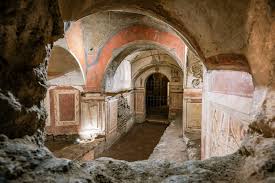
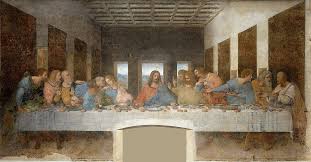
73
The Last Supper; Milan
Leonardo da Vinci 1494-98, oil and tempura
Double layer of fresco — allows color to pop
Depicts the moment Christ reveals that one of his Apostiles will betray him — mixed emotions — Christ is calm
Christ reaches for bread and wine as Judas does — holding the bag of silver
Lots of triangles — people are in groups of three — father, son, holy spirit
Humanism
Linear: positioning of objects are meant to draw you to one point on the horizon
Elimination of unnessesary details — points view only at Christ
Typically Judas is on the opposite side of the table — da Vinci puts him right next to Christ
Vinci studied anatomy — stole dead bodies
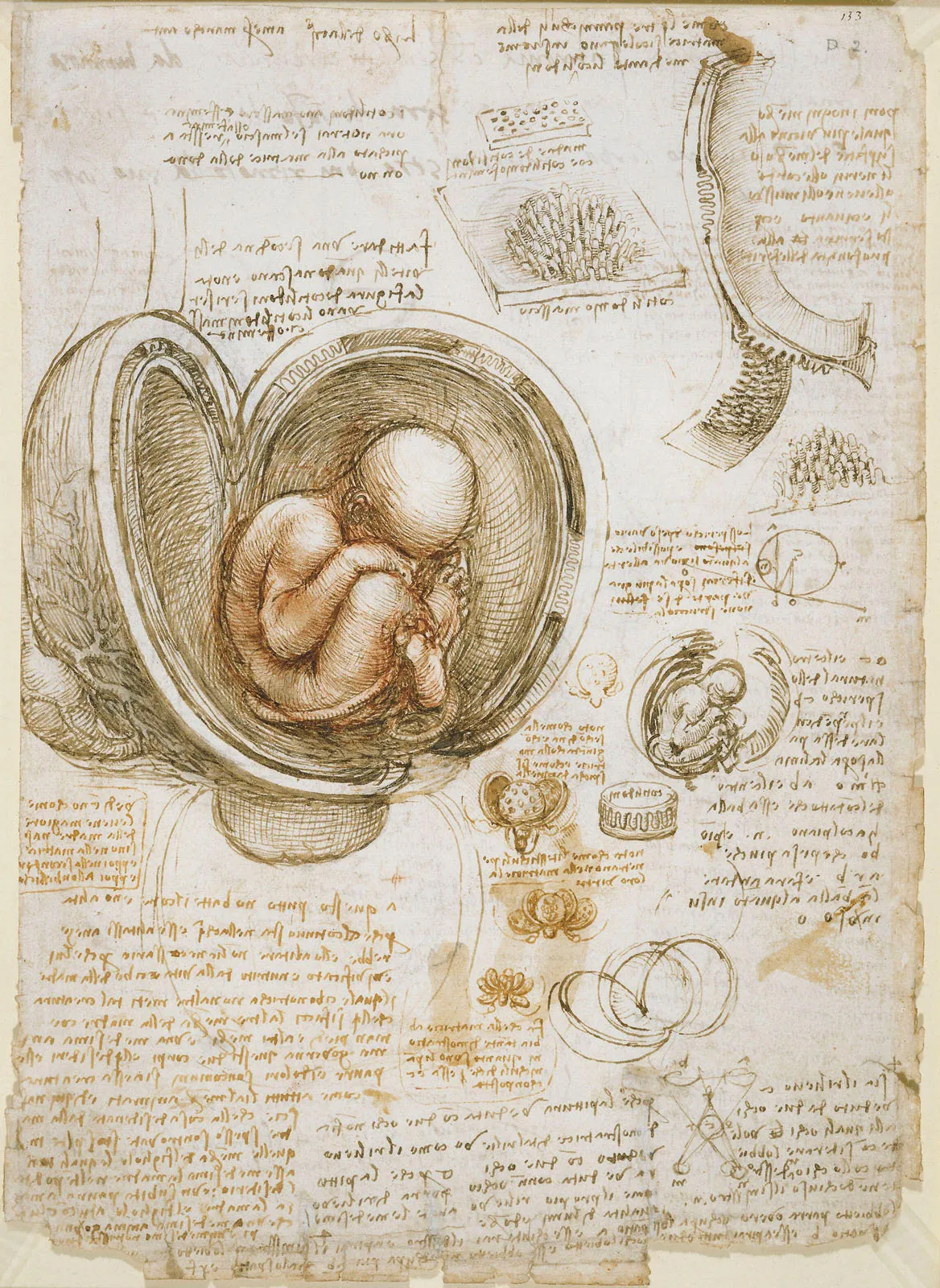
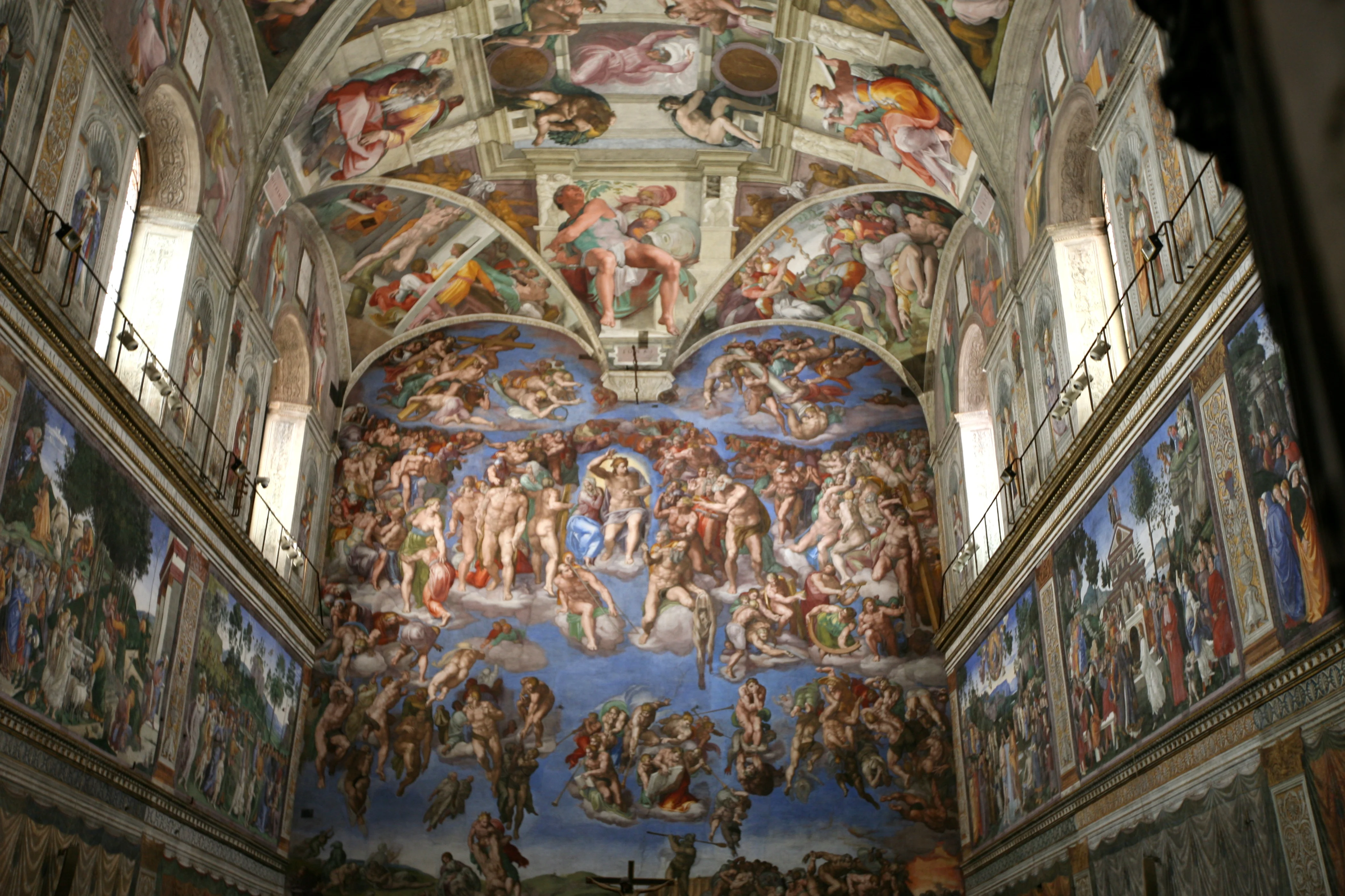
74
The Sistine Chapel — ceiling and altar frescoes
Vatican City, Michelangelo
Ceiling: 1508-12, altar: 1536-41
Building where cardinals select the Pope
Commissioned by Pope Julius II — opposed by Chamberlain Biagio da Cesena
9 panels of Genesis — painted backward and last judgement on the apse
Prophets that predict Christ
Ignudi (nude youth)
Chiaroscuro: transitioning from light to dark to give the illusion of volume and mass — the creation of the universe
Hand prints from painter — catching his balance
Hyper-humanism
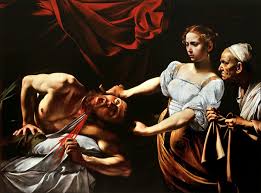
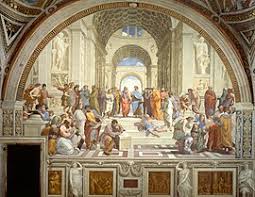
76
School of Athens; Vatican City
Raphael, 1509-1511, Fresco
Reception Room of the Apostolic Palace — originally a library
¼ paintings dedicated to human knowldge— Philosophy, Theology, Poetry, and Juris
Commissioned by Julius II — same time as the Sistine
One Point Perspective — barrel coffered vaulting
Depicts famous Philosophers — dichotomy— left shows the divine, right shows the earthly — highlights the point of the School of Athens! Every best mind is talking to each other
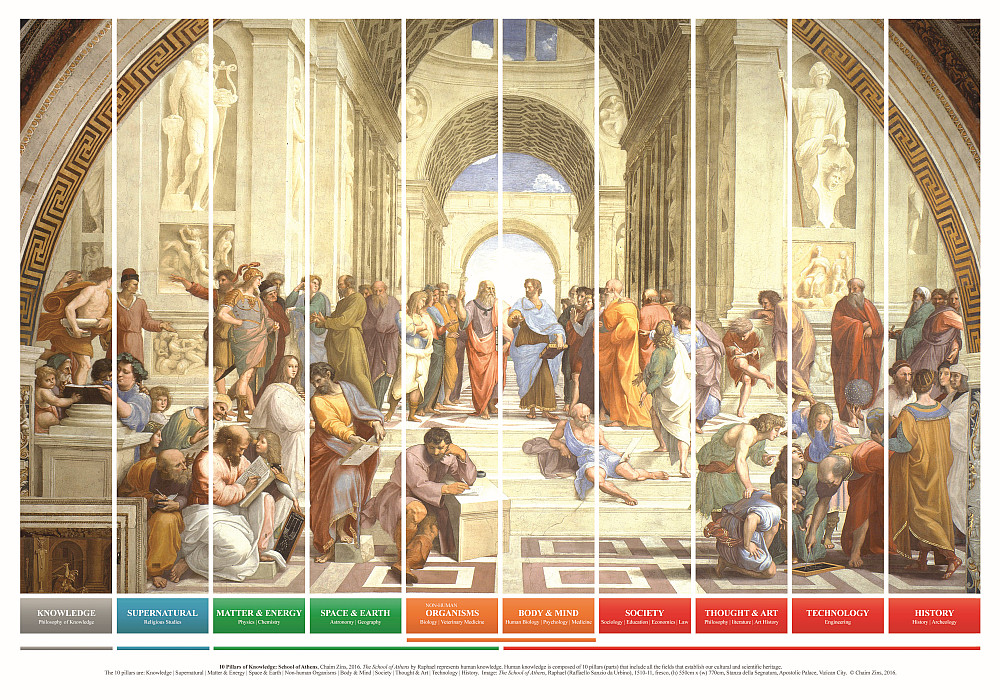
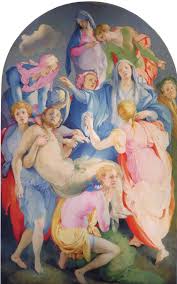
78
Entombment of Christ
Jacopo da Pontormo 1525-1528, oil on wood
Colors are uncomfortable, almost neon — so much ‘wrong’ with the painting
Mannerism: pushes the boundaries of fantasy, using art as inspiration rather than nature — elongation: everyone is stretched, hypermasculinity, intellectual puzzles — comes from the term Maniera or stylish
Voyeurism — porn
Council of Trent (1545-1563) banned Mannerism in religious art — can’t confuse people about their faith
figures are swirling — puzzle is we don’t even know what this depicts. It could be disposition, entombment — supposed to feel grief and anguish
Are we leaving the Renaissance?
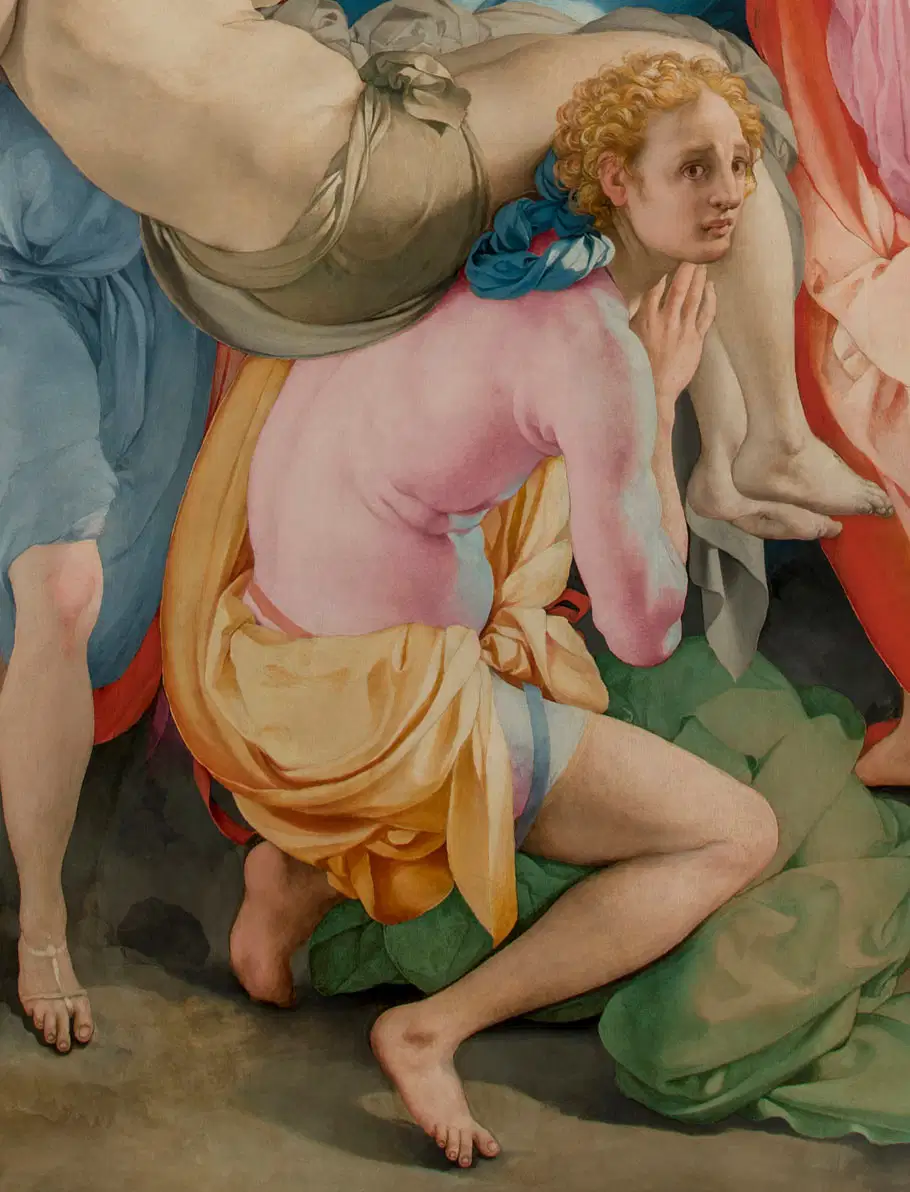
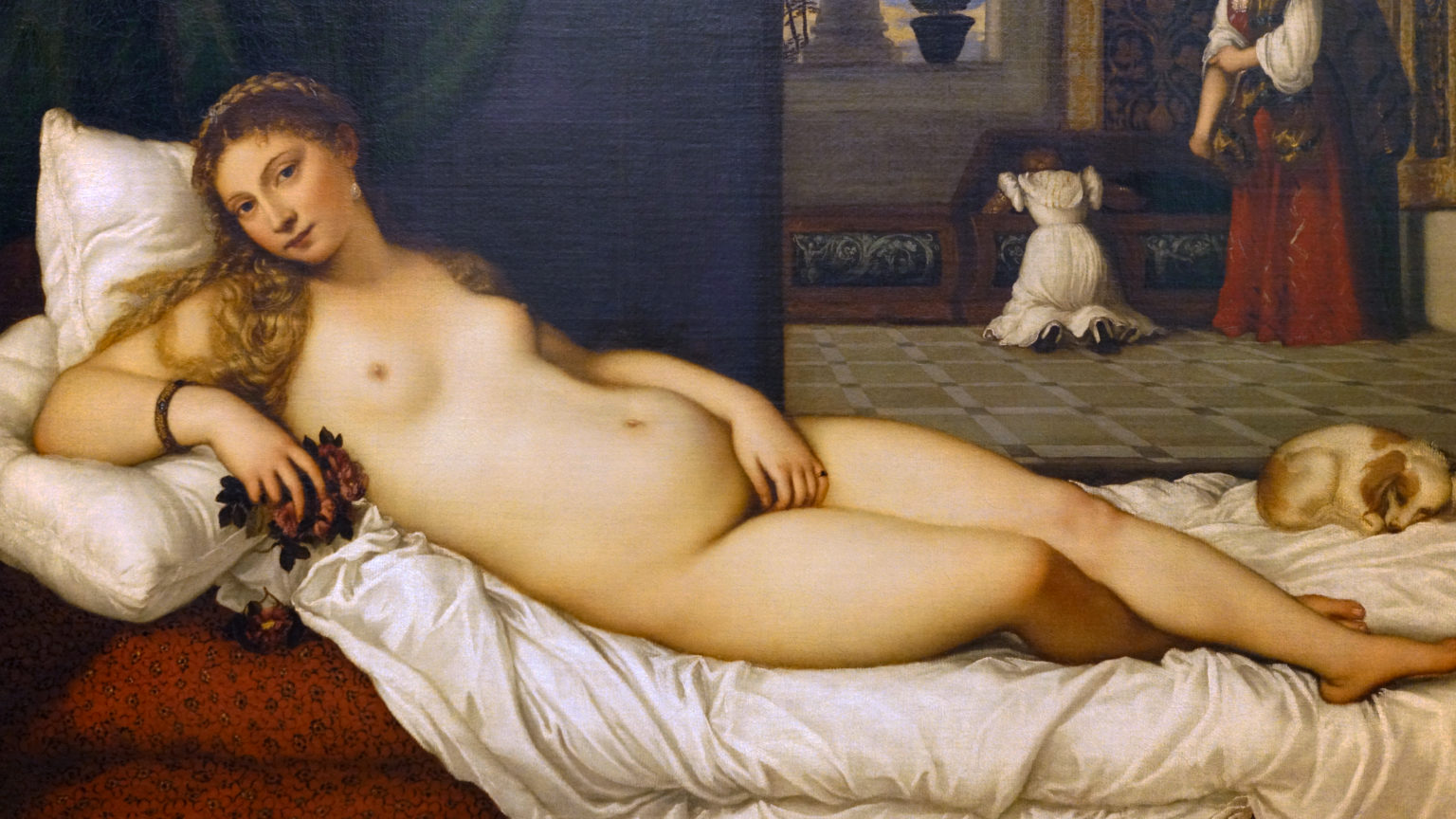
80
Venus of Urbino
Titian c. 1538, oil on canvas (first one of 250)
10-15 layers of paint
Emphasis of color and contrast — slightly shortened
Servants in the background
Generic, idealized female form — hand placement alludes to modesty but suggests masterbation
Commemorates the marraige or their sexual maturity — dog represets responsibility and innosence — wearing a flower crown and blonde hair represents a marraige tradition
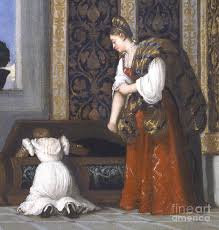
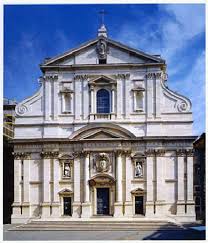
82
II Gesu and Triumph in the Name of Jesus; Rome, Italy
Renaissance: No transept — too expensive. lots of circles and sqauares. Apse and domes — engaged corinthean columns, pediments and rounded arches
Giacomo de Vignola; archicect, 16th c Giocomo della Porta; architect of facade (1568-84)
Giovanni Batista Gauii; fresco & stucco (1676=79) — marble, brick, fresco, stucco
Stucco: fine plaster used for coating surfaces with designs — easy to use
Created in response to the Protestant Reformation — counter reformation: Church of the Jesuits, Church Triumphant
The border between the Renaissance and Baroque — Barrel vaulting, fluted columns, domes, pilasters. Interior paintings 100 years later — Boroque
6 rooms dignified with different purposes
Super detailed painting, use of fake shadows — Boroque
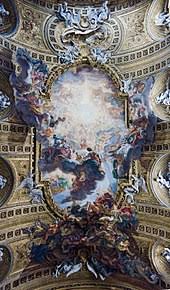
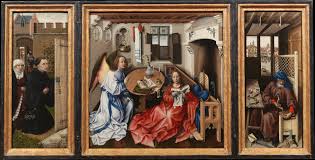
66
Annunciation Triptych (Merode Altarpiece)
Workshop of Robert Campin 1427-1432, oil on wood
Left: Commissioners of the art kneeling in the garden — Center: Annunciation to Mary — Right: Saint Joseph as carpenters
Settings that viewer is familar with — Belguan city, traditional home setting
Likely that inner panel was by Campin and his guild made the other two panels
Perspective is off
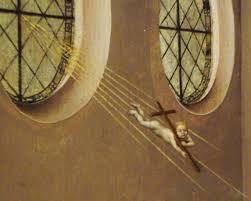
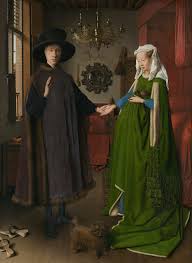
68
Arnolfini Portrait
Jan van Eyck 1434, oil on wood
Depicts wealthy merchant and his potential bride — her shoes are off + dog — possibly pregnant
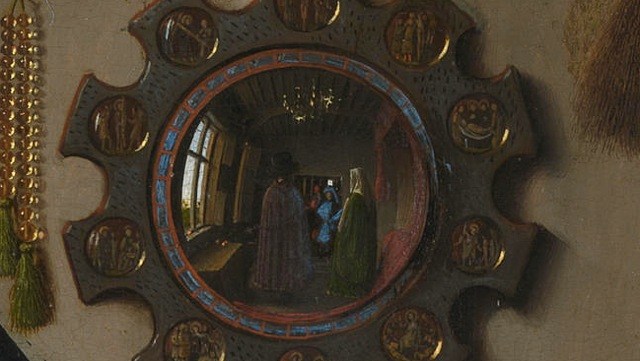
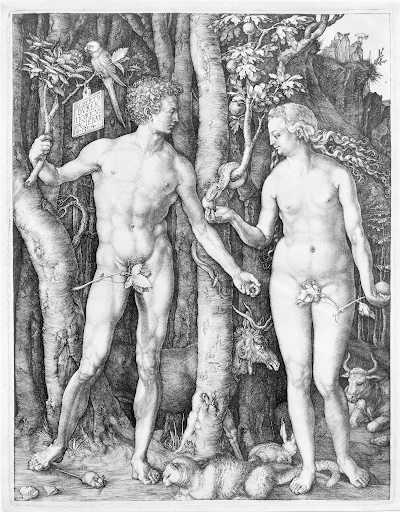
74
Adam and Eve
Albrecht Durer 1504, engraving
Can be reprinted across the world — fame
Garden of Eden — more rugged, overgrown — looks like Germany, where the artist is from
Calm before the storm
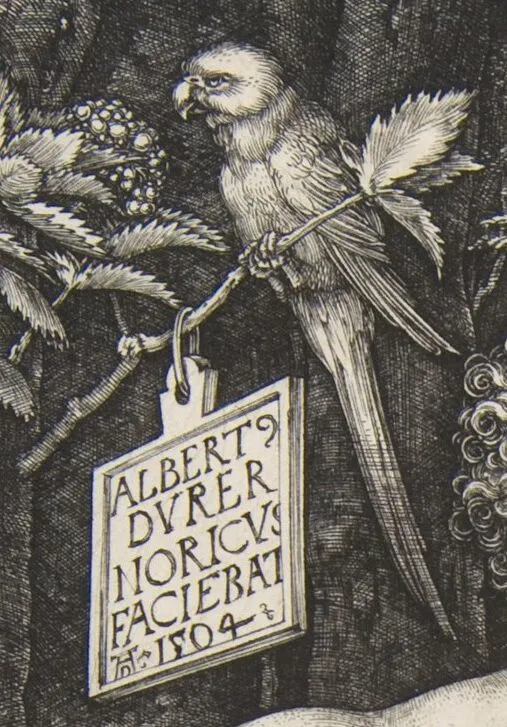
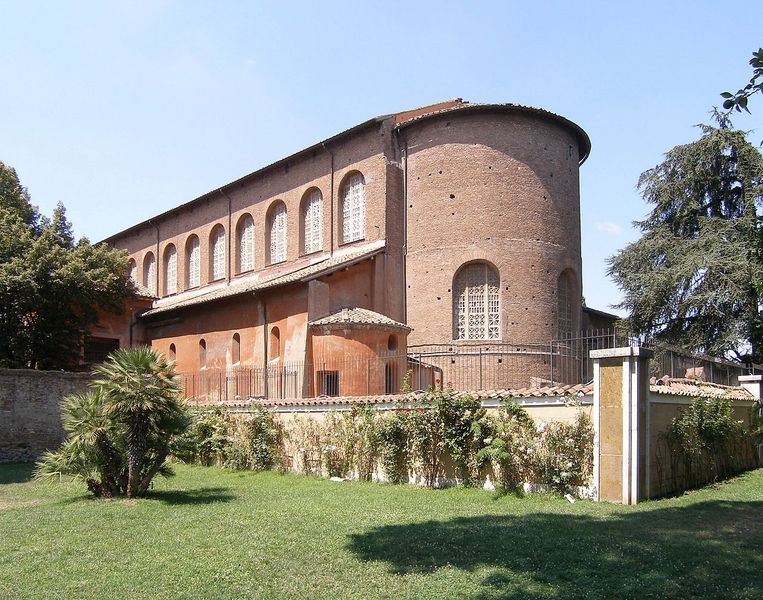
49
Basilica of Santa Sabina
Rome, Italy. Late Antique Europe, 422-432. Brick and stone with wooden roof
Lacks a Transept, showing this is an early form of a large church
Has large wooden doors in front that may have the earliest scene of Christ’s crucifixion
Columns that divided the nave and aisle are spolia from pagan temples
Hold an arcade of arches with inlay stone
depictions of the eucharist
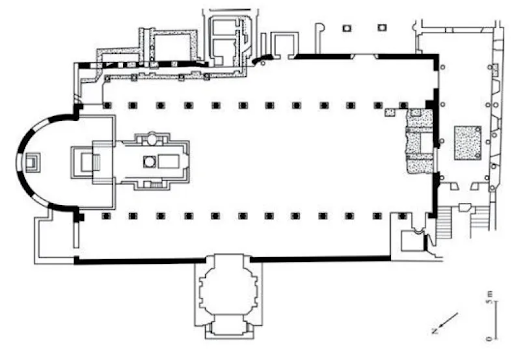
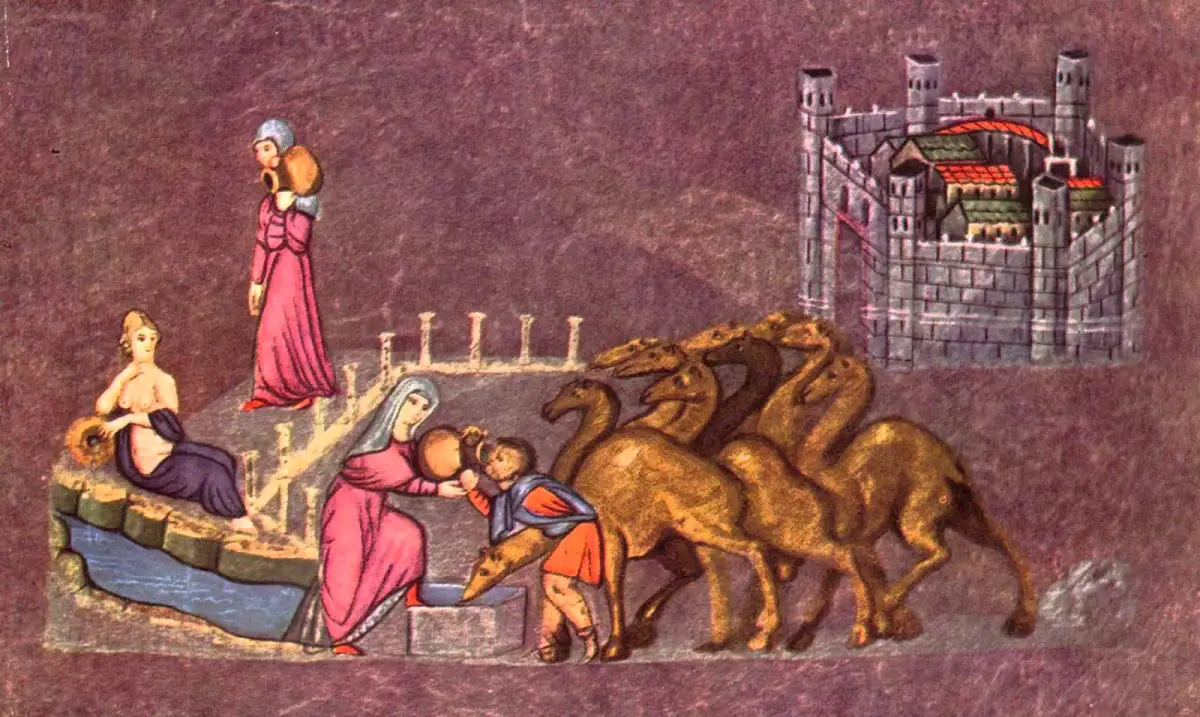
50
Folia of the Vienna Genesis
Early Byzantine Europe, Early 6th c, Illuminated Manuscript (tempera, gold and silver on purple vellum)
Illuminated Manuscript: Handwritten books with decoration, usually golds and silvers
Tempera- Permanent, fast drying paint
medium that is pigments mixed with a
water soluble binding agent like egg yolk
Vellum- Calfskin parchment
depict Rebecca and Eliezer at the Well and Jacob Wrestling the Angel
Text written in silver so it would gleam, and
then surface dyed purple suggesting a
royal commission
Attempts to tell a narrative in a confined
space, incorporating of classical and
medieval elements
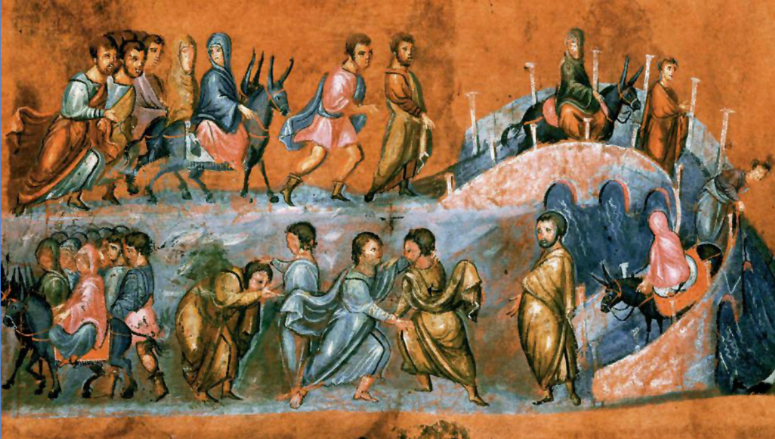
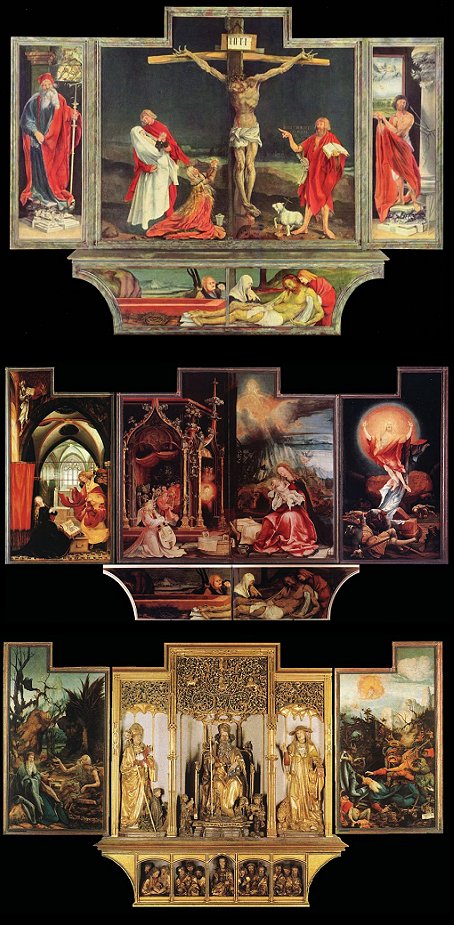
77
Isehelm Altarpiece
Matthias Grunewald 1512-1516, Oil on wood 8’ 9”, 10’, 7’
Three layers of work (triptych three times), only opened up during religious ceremonies and festivals
Dedicated to Saint Anthony — cured
ergotism — many references to Christ’s
wounds emulates ergots — christ is dead
dead and in extreme pain
Juxtaposed with inner layer — blinded by
his holy light
Focus on emotion, not realism — figures are
mutilated and distorted — elongated
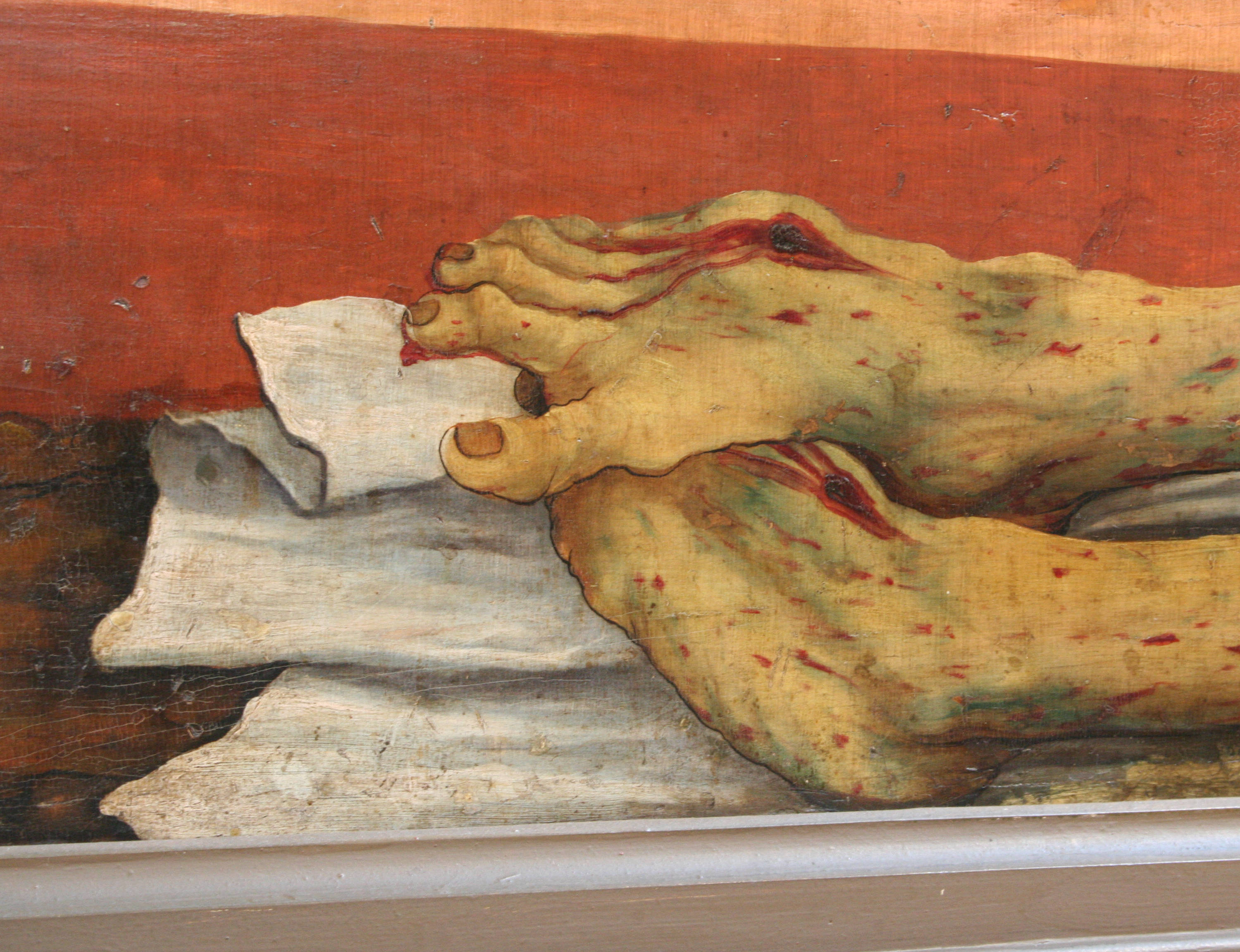
79
Allegory of Law and Grace
86
Henri IV Receives the Portrait of Marie de’ Medici, from the Marie de’ Medici Cycle
Peter Raul Rubens, 1621-1625, oil on canvas
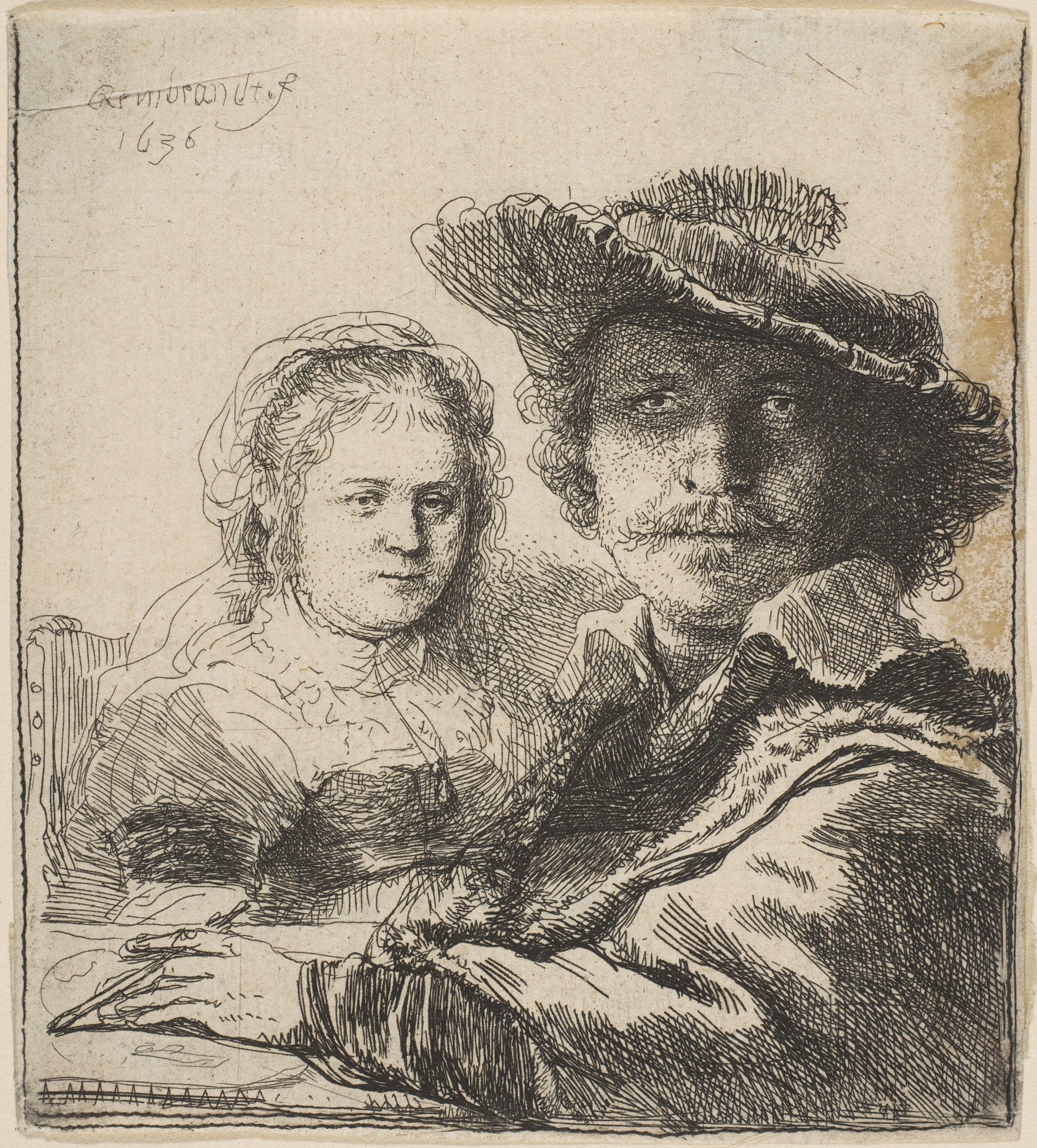
87
Self-Portrait with Saskia
Rembrandt, 1636, etching
Baroque Cosplay — liked to dress up in historical garb — wearing medieval clothing
Has 75 self-portraits — more than any artist at the time
Rembrandt is looking in a mirror and drawing what he sees — drew himself in roles such as a beggar, general, doctor, etc.
Etching shows free and loose style — different from his extreme skill — this is fun for him, he can play around with color and line weight
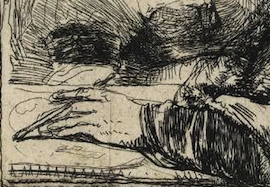
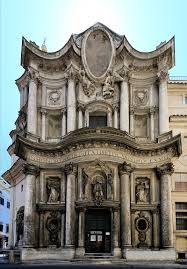
88
San Carlo alle Quattro Fontane: Rome, Italy
Francesco Borromini 1638-1646, stone & stucco
Commissioned by Trinitarian Order — ransomed Christians taken at war/by pirates
Tiny Cross insignia
Cheap materials — the order was poor, christians weren’t being nabbed very often— made to look like marble
Engaged columns — made to fit the space like the Pazzi Chapel
Movement feeling through undulating walls
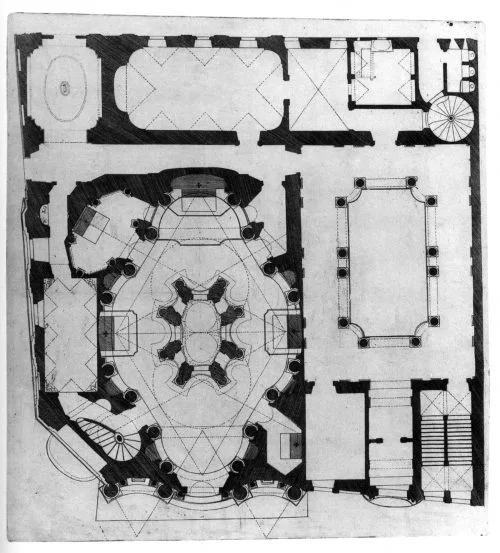
92
Woman Holding a Balance
Johannes Vermeer 1164, Oil on canvas
Tronie: not a particular person, a type of person
Upper middle class woman — lots of jewelry, commissioned painting of Jesus
Handling her money— banking class
Vermeer will always love light from a window & LOVES fabric breaking the wall
Behind her is the last judgement — Christ is directly above her — very religious
93
The Palace of Versailles
“Stupid fancy”
Versailles, France started 1669
Architects: Louis Le Vau and Jules Hardouin-Mansart
King Louis the 14th — forced people to live with him in his palace to control rebellions against him
2,153 windows, gems in the wall, sculpture
UNESCO site in 1979
96
Fruits and Insects
Rachel Ruysch 1711, oil on wood
Still Life: Painting an arrangement of objects — good practice, people wouldn’t consider it art
Highest paid artist of her time
98
The Tete a Tete, From Marriage a la Mode
William Hogarth 1743 oil on canvas
Head to Head — royal life before the french revolution — shows how imoral, crazy, and gross they are
Squanderfield Family — pretends to be the upper upper class — painting is a comment on the fact that they are frauds
Industrialization is occurring — increased wealth gap
Marriage a la Mode — modern marriage, for money or status
56
Great Mosque
Cordoba, Spain, Umayyad 785-786
Stone Masonry
Mihrab— horsshoe shaped facal point
57
Pyxis of al-Mughira
Umayyad 968 Ivory, 6.3× 4.6 inches
65
Alhambra (Palace and Fortress Complex)
Granada, Spain
81
Frontispiece of the Codex Mendoza
Viceroyalty of New Spain 1541-1542
Ink and color on paper
Commissioned by Viceroy Mendoza — used to introduce the Spanish King Charles V to Aztec
Blue represents water, chinampas, people facing the eagle — eagle represents the main Aztec City, human sacrifice
Blue glyphs around the border represents the Aztec calendar cycle
Register — use of line or form to divide a piece
95
The Virgin of Guadalupe
Miguel Gonzalez 1698, Basillica of Guadalupe, Mexico City
Oil on canvas, inlaid with mother-of-pearl
Depicts miracles around her — rose petals fallen in the shape of Mary
Small piece of mother-of-pearl — mirrors a dove
Cosmopolitan: the fusion of cultures and styles — social hierarchy was painted
Mexico + Japan = this art
97
Spaniard and Indian Produce a Mestizo
Juan Rodriguez Juarez 1715
Oil on Canvas
Racial Taxonomy based on mixing — Enlightenment: the more European the better
Most likely sent back to Europe to show the king their racial superiority
90
Angel with Arquebus, Asiel Timor Del
Master of Calamarca (La Paz School, Bolivia) 17th century
Oil on canvas
Fashionable angels began in peru, grew very popular in the Andes
Celestial, military, and aristocratic
Belief that thee angels with stop the Catholics from falling into bad influences — Army of God
Failed: mixed with native deities — began to look androgynous — cosmopolitan
94
Screen with the Siege of Belgrade and Hunting Scene
Gonzalez family 1697-1701
Tempora and resin on wood, shell inlay
6 of 12 panels
Made for a victory palace — shows wealth
Biombos: folding screen that served to divide men and women — women got dainty designs, men got gruesome battle scenes